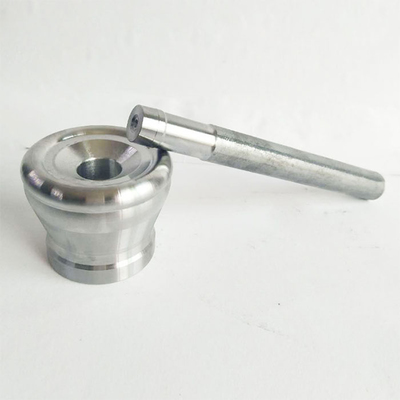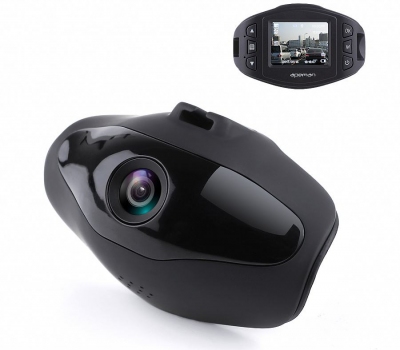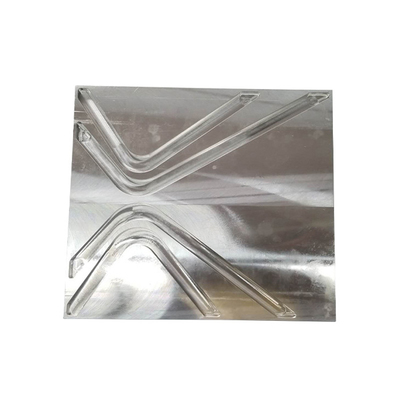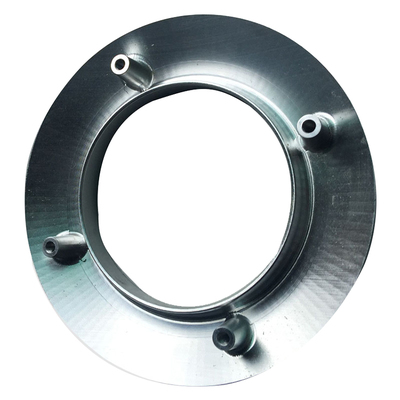The design scheme of PVC plastic formula
Pure polyvinyl chloride (PVC) resin belongs to a kind of strong polar polymer, and its intermolecular force is relatively large, which leads to higher softening temperature and melting temperature of PVC. Generally, it needs 160~210℃ to process.
In addition, the substituted chlorine group contained in the PVC molecule easily leads to the dehydrochlorination reaction of the PVC resin, thereby causing the degradation reaction of the PVC. Therefore, the PVC is extremely unstable to heat, and the temperature rise will greatly promote the removal of HCL reaction of the PVC. The HCL-removal reaction started, which led to the degradation of PVC. In view of the above two deficiencies, PVC needs to be processed with additives in order to be able to produce a variety of soft, hard, transparent, good electrical insulation, foam and other products that meet people's needs.
When selecting the variety and amount of additives, various factors must be fully considered, such as physical-chemical properties, flow properties, and molding properties, and finally establish the ideal formula. In addition, we also need to choose the type of resin according to different uses and processing methods. The combination of different types of PVC resins and various additives is what we often call PVC formulation design. How to design a specific formula?
1. The choice of resin
The viscosity or K value is commonly used in the industry to indicate the average molecular weight (or average degree of polymerization). The molecular weight of the resin is related to the physical and mechanical properties of the product. The higher the molecular weight, the higher the tensile strength, impact strength, and elastic modulus of the product, but the fluidity and plasticity of the resin melt decrease. At the same time, different synthesis processes result in different resin forms. What we commonly use is the loose resin produced by the suspension method, commonly known as SG resin, which has loose structure, irregular surface shape, and porous cross-section conveying in a mesh shape. Therefore, the SG resin absorbs plasticizers quickly and has a fast plasticizing speed. The main uses of suspension resins are shown in the table below. Emulsion resin is suitable for PVC paste to produce artificial leather.
Suspension method PVC resin model and main use
Model Level Main Purpose
SG1 Class A Advanced Electrical Insulating Material
SG2 Class 1 A electrical insulating material, film Class 1 B, Class 2 general soft products
SG3 Class 1 A electrical insulating material, agricultural film, artificial leather surface film Class 1 B, Class 2 all-plastic sandals
SG4 Class 1 A Industrial and civil film Class 1 B, Class 2 hose, artificial leather, high-strength pipe
SG5 Class 1 A Transparent product Class 1 B, Class 2 hard tube, hard piece, monofilament, catheter, profile
SG6 Class 1 A record, transparent film Class 1 B, Class 2 hard board, welding rod, fiber
SGG7 first-level A bottle, transparent sheet, first-level B, second-level rigid injection molding pipe fittings, perchloroethylene resin
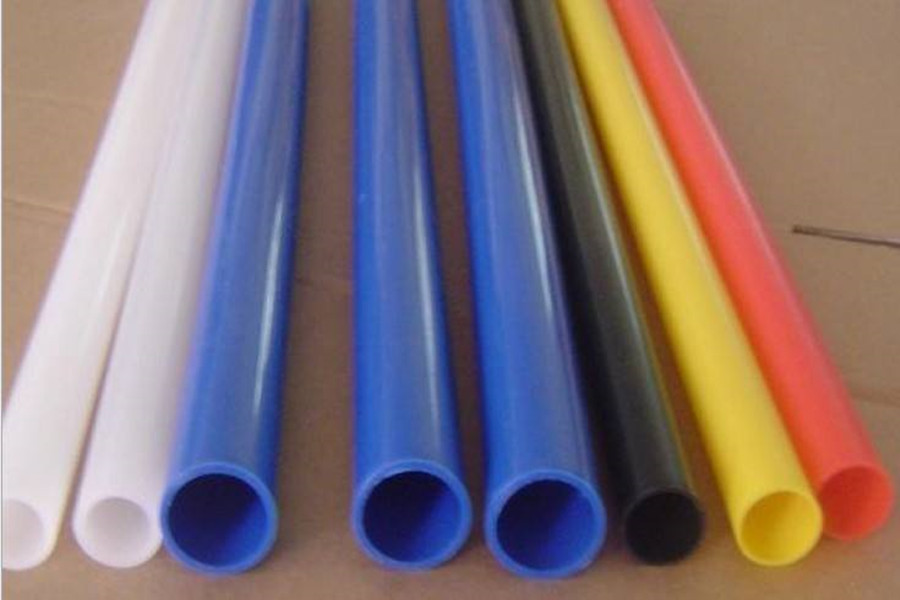
2. Plasticizer system
The addition of plasticizers can reduce the force between PVC molecular chains and reduce the glass transition temperature, flow temperature and melting point of the contained microcrystals of PVC plastics. Plasticizers can increase the plasticity of the resin and make the product soft and resistant. Good low temperature performance. When the plasticizer is less than 10 parts, the mechanical strength is not obvious. When about 5 parts of the plasticizer is added, the mechanical strength is the highest, which is the so-called anti-plasticization phenomenon. It is generally believed that the anti-plasticization phenomenon is that after a small amount of plasticizer is added, the mobility of the macromolecular chain increases, so that the molecules are ordered to produce the effect of microcrystals. The impact strength of hard products with a small amount of plasticizer is lower than that without time, but after increasing to a certain dose, the impact strength will increase with the increase of the amount, which meets the universal law.
In addition, the increase of plasticizer will reduce the heat resistance and corrosion resistance of the product. For each additional part of plasticizer, Martin's heat resistance will drop by 2 to 3. Therefore, general hard products do not add plasticizers or add less plasticizers. Sometimes several parts of plasticizer are added in order to improve processing fluidity. However, soft products need to add a large amount of plasticizer. The larger the amount of plasticizer, the softer the product.
The types of plasticizers include phthalates, linear esters, epoxies, phosphate esters, etc. In terms of their comprehensive performance, DOP is a better variety and can be used in various PVC product formulations. Straight-chain esters such as DOS are cold-resistant plasticizers. They are used in agricultural films for a long time. They have poor compatibility with PVC. Generally, no more than 8 parts is appropriate. Epoxy plasticizers have good cold-resistant properties. It has heat resistance and light resistance, especially when used in combination with metal soap stabilizers, it has a synergistic effect. The general amount of epoxy plasticizer is 3 to 5 parts.
Wire and cable products need to be flame retardant, and plasticizers with relatively good electrical properties should be selected. PVC itself is flame-retardant, but most soft products after plasticization are flammable. In order to make soft PVC products flame-retardant, flame-retardant plasticizers such as phosphate and chlorinated paraffin should be added. These two types of plasticizers Its electrical properties are also better than other plasticizers, but as the amount of plasticizer increases, the electrical properties generally show a downward trend. For PVC products used for non-toxic purposes, non-toxic plasticizers such as epoxy soybean oil should be used. As for the total amount of plasticizer, it should be different according to the requirements of the softness of the product and the use, process and use environment. The general calendering process produces PVC film, and the total amount of plasticizer is about 50 parts. The blown film is slightly lower, generally 45-50 parts.
3. Stabilizer system
When PVC is processed at high temperature, HCL is easily released, forming an unstable polyolefin structure. At the same time, HCL has an autocatalytic effect, which will further degrade PVC. In addition, if there is oxygen or iron, aluminum, zinc, tin, copper and cadmium ions, it will catalyze the degradation of PVC and accelerate its aging. Therefore, plastics will have various undesirable phenomena, such as discoloration, deformation, cracking, decreased mechanical strength, decreased electrical insulation performance, and brittleness. In order to solve these problems, stabilizers must be added to the formula, especially heat stabilizers are essential. Stabilizers for PVC include heat stabilizers, antioxidants, ultraviolet absorbers and chelating agents. In formula design, different varieties and different quantities of stabilizers are selected according to product use requirements and processing technology requirements.
(1) Heat stabilizer
The heat stabilizer must be able to capture the self-catalyzed HCL released by the PVC resin, or be able to react with the unstable polyolefin structure produced by the PVC resin to prevent or reduce the decomposition of the PVC resin. Generally, the characteristics and functions of the heat stabilizer selected in the formula and the requirements of the product are considered. For example: Lead salt stabilizers are mainly used in hard products. Lead salt stabilizers have the characteristics of good thermal stabilizers, excellent electrical properties, and low price. However, it is more toxic and easily contaminates products, so it can only produce opaque products. In recent years, a large number of composite stabilizers have appeared, and single-component stabilizers have been in danger of being replaced. The composite stabilizer is characterized by strong specificity, low pollution, and easy ingredients for processing enterprises.
However, because there is no uniform standard, the composite stabilizers of each company are very different. Barium and cadmium stabilizers are a class of heat stabilizers with better performance. It is widely used in PVC agricultural film. Usually barium cadmium zinc and organic phosphite and antioxidant are used together. Calcium-zinc stabilizers can be used as non-toxic stabilizers for food packaging, medical equipment, and pharmaceutical packaging, but their stability is relatively low. When the calcium stabilizer is used in large amounts, the transparency is poor and it is easy to bloom. Calcium and zinc stabilizers generally use polyols and antioxidants to improve their performance.
Recently, calcium and zinc composite stabilizers for hard pipes have appeared in China. Organotin heat stabilizers have good performance and are a good variety for PVC hard products and transparent products. Epoxy stabilizers are usually used as auxiliary stabilizers. This kind of stabilizer can improve the stability of light and heat when used together with the stabilizer of barium, cadmium, calcium and zinc, but its disadvantage is that it is easy to ooze. Also used as auxiliary stabilizers are polyols and organic phosphites. In recent years, rare earth stabilizers and hydrotalcite stabilizers have also appeared. The main feature of rare earth stabilizers is excellent processing performance, while hydrotalcite is a non-toxic stabilizer.
(2) Antioxidant
In the process of processing and use, PVC products are oxidized due to heat and ultraviolet rays, and the oxidative degradation is related to the generation of free radicals. The main antioxidant is a chain scission terminator or free radical scavenger. Its main function is to combine with free radicals to form stable compounds and terminate the chain reaction. The main antioxidant for PVC is usually bisphenol A. There are auxiliary antioxidants or hydrogen peroxide decomposers. PVC auxiliary antioxidants are triphenyl phosphite and phenyl diisooctyl phosphite. The combined use of main and auxiliary antioxidants can play a synergistic effect.
(3) Ultraviolet absorber
PVC products used outdoors, due to the ultraviolet radiation in its sensitive wavelength range, the PVC molecules become excited, or their chemical bonds are destroyed, causing free radical chain reactions and promoting PVC degradation and aging. In order to improve the ability of UV resistance, UV absorbers are often added. The commonly used UV absorbers for PVC are triazine-5UV-9, UV-326, TBS, BAD, OBS. Triazine-5 has the best effect, but the film is slightly yellow due to its yellow color, which can be improved by adding a small amount of phthalocyanine blue. UV-9 is commonly used in PVC agricultural film, and the general dosage is 0.2~0.5. TBS, BAD and OBS, which belong to salicylic acid, have a mild effect. When used in conjunction with antioxidants, they will have a good anti-aging effect. For non-transparent products, the weather resistance is generally improved by adding light-shielding rutile titanium dioxide. At this time, if an ultraviolet absorber is added, a large amount is required, which is not very cost-effective.
(4) Chelating agent
In the PVC plastic stabilization system, the commonly added phosphites are not only auxiliary antioxidants, but also act as chelating agents. It can generate metal complexes with harmful metal ions that promote the removal of HCL from PVC. Commonly used phosphites are triphenyl phosphite, phenyl diisooctyl phosphite and diphenyl octyl phosphite. In the PVC agricultural film, the general dosage is 0.5 to 1 part. It is easy to color at the initial stage when used alone, and the thermal stability is not good. It is generally used in combination with metal soaps.
4, lubricant
The role of lubricants is to reduce the friction between the polymer and the device, as well as the internal friction between polymer molecular chains. The former is called external lubrication and the latter is called internal lubrication. Those with external lubrication effect are silicone oil, paraffin wax, etc., and those with internal lubrication effect such as monoglyceride, stearyl alcohol and esters. As for metal soaps, they have both. In addition, it should be noted that the term internal and external lubrication is only a habitual term of ours, and there is no obvious limit. Some lubricants have different functions under different conditions, such as stearic acid, which can play a role at low temperatures or in small amounts. Internal lubrication, but when the temperature rises or the amount increases, its external lubrication gradually dominates. There is also a special case of calcium stearate, which is used as an external lubricant when used alone, but when it is used with hard lead When used together with paraffin, it becomes an internal lubricant to promote plasticization.
In rigid PVC plastics, excessive lubricant will lead to a decrease in strength and also affect process operations. For injection products, peeling will occur, especially near the gate. For injection products, the total amount of stearic acid and paraffin wax is generally 0.5 to 1 part: extruded products generally do not exceed 1 part.
In the formulation of soft products, too much lubricant will bloom and affect the strength of the product and high-frequency welding and printability. Too little lubricant will stick to the roll. For blown films, too little lubricant will stick to the die and easily cause the plastic to coke in the mold. At the same time, in order to improve the stickiness of the blown film, a small amount of internal lubricant monoglyceride should be added. When producing PVC soft products, the amount of lubricant added is generally less than 1 part.
5, filler
Some inorganic fillers are added to PVC as extenders to reduce costs, while improving certain physical and mechanical properties (such as hardness, PVC plastic formula design heat distortion temperature, dimensional stability and reducing shrinkage), and increase electrical insulation And flame resistance. In recent years, it has been a research hotspot to nanoscale inorganic fillers and use them as modifiers in plastics. There have been some research results such as nano-calcium carbonate toughening and strengthening PVC. The important problem to be solved is how to Disperse the nano products evenly in the plastic.
In the hard extrusion molding process, the general fillers for PVC products are calcium carbonate and barium sulfate. For injection molded products, better fluidity and toughness are required. Generally, titanium dioxide and calcium carbonate are suitable. The amount of filler of hard products within 10 parts has little effect on the performance of the product. In recent years, in order to reduce the cost, everyone has added fillers, which is detrimental to the performance of the product.
In terms of soft products, adding a proper amount of fillers will make the film have good elasticity, dry and not shiny, and have the advantages of high heat and pressure resistance and small permanent deformation. Fillers such as talc, barium sulfate, calcium carbonate, titanium dioxide and clay are commonly used in the formulation of soft products. Among them, talc has little effect on transparency.
In the production of film, the amount of filler can reach 3 parts, which affects the performance. At the same time, pay attention to the fineness of the filler, otherwise it is easy to form a rigid block and cause the plastic to break. Calcium carbonate is mainly added to the common layered cable; calcined clay is added to the layered layer of the insulated cable to improve the heat resistance and electrical insulation of the plastic. In addition, antimony trioxide can also be added as a filler to soft products to improve the flame resistance of the products.
6, coloring agent
The colorants used for PVC plastics are mainly organic pigments and inorganic pigments. PVC plastics have higher requirements for pigments, such as resistance to high temperatures during processing, not affected by HCL, no migration during processing, and light resistance. Commonly used ones are: (1) Red is mainly soluble azo pigments, cadmium red inorganic pigments, iron oxide red pigments, phthalocyanine red, etc.; (2) Yellows are mainly chrome yellow, cadmium yellow and fluorescent yellow, etc.; (3) Blue The main colors are phthalocyanine blue (four) green is mainly phthalocyanine green; (5) white is mainly titanium dioxide; (6) purple is mainly plastic violet RL; (7) black is mainly carbon black. In addition, the fluorescent whitening agent is used for whitening, the gold powder and silver powder are used for color printing, and the pearl powder makes the plastic have pearl-like astigmatism.
7, foaming agent
The foaming agents used for PVC are mainly ADC foaming agent, azobisisobutyronitrile and inorganic foaming agent. In addition, lead salt and cadmium salt also help foaming, reducing the decomposition temperature of AC foaming agent to about 150~180℃. The amount of foaming agent depends on the foaming ratio.
8. Flame retardant
Plastics used in building materials, electrical appliances, automobiles, and airplanes all require flame retardancy. Generally, compounds containing halogen, antimony, boron, phosphorus and nitrogen have flame retardant effects and can be used as flame retardants.
Rigid PVC plastics are inherently flame-retardant due to their high chlorine content. For PVC cables, decorative walls and plastic curtains mixed with flame-retardants can increase their flame resistance. Commonly used flame retardants such as chlorinated paraffin, antimony trioxide (2~5 parts), and phosphate ester. Phosphate esters and chlorine-containing plasticizers also have flame retardancy.
Link to this article: The design scheme of PVC plastic formula
Reprint Statement: If there are no special instructions, all articles on this site are original. Please indicate the source for reprinting:https://www.cncmachiningptj.com/,thanks!
 PTJ® provides a full range of Custom Precision cnc machining china services.ISO 9001:2015 &AS-9100 certified. 3, 4 and 5-axis rapid precision CNC machining services including milling, sheet metal to customer specifications,Capable of metal & plastic machined parts with +/-0.005 mm tolerance.Secondary services include CNC and conventional grinding, laser cutting,drilling,die casting,sheet metal and stamping.Providing prototypes, full production runs, technical support and full inspection.Serves the automotive, aerospace, mold&fixture,led lighting,medical,bicycle, and consumer electronics industries. On-time delivery.Tell us a little about your project’s budget and expected delivery time. We will strategize with you to provide the most cost-effective services to help you reach your target,Welcome to Contact us ( [email protected] ) directly for your new project.
PTJ® provides a full range of Custom Precision cnc machining china services.ISO 9001:2015 &AS-9100 certified. 3, 4 and 5-axis rapid precision CNC machining services including milling, sheet metal to customer specifications,Capable of metal & plastic machined parts with +/-0.005 mm tolerance.Secondary services include CNC and conventional grinding, laser cutting,drilling,die casting,sheet metal and stamping.Providing prototypes, full production runs, technical support and full inspection.Serves the automotive, aerospace, mold&fixture,led lighting,medical,bicycle, and consumer electronics industries. On-time delivery.Tell us a little about your project’s budget and expected delivery time. We will strategize with you to provide the most cost-effective services to help you reach your target,Welcome to Contact us ( [email protected] ) directly for your new project.

- 5 Axis Machining
- Cnc Milling
- Cnc Turning
- Machining Industries
- Machining Process
- Surface Treatment
- Metal Machining
- Plastic Machining
- Powder Metallurgy Mold
- Die Casting
- Parts Gallery
- Auto Metal Parts
- Machinery Parts
- LED Heatsink
- Building Parts
- Mobile Parts
- Medical Parts
- Electronic Parts
- Tailored Machining
- Bicycle Parts
- Aluminum Machining
- Titanium Machining
- Stainless Steel Machining
- Copper Machining
- Brass Machining
- Super Alloy Machining
- Peek Machining
- UHMW Machining
- Unilate Machining
- PA6 Machining
- PPS Machining
- Teflon Machining
- Inconel Machining
- Tool Steel Machining
- More Material

